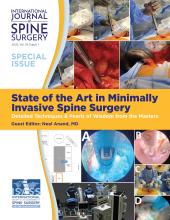ABSTRACT
Background Paragangliomas (PGLs) are rare neuroendocrine tumors that can arise from any autonomic ganglion of the body. Most PGLs do not metastasize. Here, we present a rare case of metastatic PGL of the spine in a patient with a germline pathogenic succinate dehydrogenase subunit B (SDHB) mutation.
Methods In addition to a case report we provide a literature review of metastatic spinal PGL to highlight the importance of genetic testing and long-term surveillance of these patients.
Results A 45-year-old woman with history of spinal nerve root PGL, 17 years prior, presented with back pain of several months' duration. Imaging revealed multilevel lytic lesions throughout the cervical, thoracic, and lumbar spine as well as involvement of the right mandibular condyle and clavicle. Percutaneous biopsy of the L1 spinal lesion confirmed metastatic PGL and the patient underwent posterior tumor resection and instrumented fusion of T7–T11. Postoperatively the patient was found to have a pathogenic SDHB deletion.
Conclusions Patients with SDHx mutation, particularly SDHB, have increased risk of developing metastatic PGLs. Consequently, these individuals require long-term surveillance given the risk for developing new tumors or disease recurrence, even years to decades after primary tumor resection. Surgical management of spinal metastatic PGL involves correcting spinal instability, minimizing tumor burden, and alleviating epidural cord compression. In patients with metastatic PGL of the spine, genetic testing should be considered.
Footnotes
Disclosures and COI: None declared. This research did not receive any specific grant from funding agencies in the public, commercial, or not-for-profit sectors. Patient's written informed consent for publication was obtained.
- This manuscript is generously published free of charge by ISASS, the International Society for the Advancement of Spine Surgery. Copyright © 2021 ISASS







